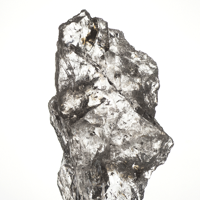Posted on February 23, 2023

It is interesting to look back to Dominic Frisby's analysis where the expert laments platinum's recent price shortcomings, one of several of Frisby's pieces on platinum group metals worth reading. Dated a little over a year ago, Frisby covers all the points that applied back then: historically, platinum was priced at 1.25 the price of gold, yet it sat at $980 when gold sat around $1,800.
Frisby calls that price point a bargain, having elsewhere outlined why platinum is extremely cheap around these levels. Now, as gold retraced back to nearly $1,800 from $1,900, platinum appears to be eyeing $1,100. Quite the catch-up. But why the extreme price see-saws over the last 15 years?
In a sense, each of the four precious metals can be faulted for having excellent fundamentals and being excessively subject to sometimes outright strange influences. In the case of platinum group metals, industrial demand dominates the price trajectory of both platinum and palladium. Both of these metals have unique properties that make them irreplaceable, for the most part. They are kind of interchangeable, though, which is what made palladium shoot up way past gold's price not too long ago.
The regulations that have pummeled platinum and propped up palladium can be summed up very simply: "We don't like these kinds of engines, so you have to make another kind." Platinum being a more important component of the former rather than the latter, it took an obvious hit.
Those wanting a true bull run in platinum, one that would perhaps normalize its price from a historical standpoint, have been betting on either automotive industry trend changes or a surge in green hydrogen technology demand. Both of these seem feasible, but here's the thing: platinum's fundamental picture is such that we don't actually need to look to exotic influences.
It's the rarest of the four precious metals, considerably more so than gold. As mentioned, it has unique properties related to the alloy itself. We're told that the supply picture isn't as bad as it's made out to be even though Russia produces a lot of it.
But that's only because the main producer is South Africa, which accounts for as much as 70% of the global platinum supply. Palladium shot up after the Russian invasion of Ukraine began, but has since dropped, perhaps on assurances of sufficient supply. Still, this might be because "only" 40% of the world's palladium is produced by Russia. Platinum's supply is far more localized, and in terms of instability, it's hard to argue that South Africa isn't akin to Russia with nicer weather.
It has been pointed out that any kind of black swan event in South Africa would almost certainly trigger a massive supply squeeze of platinum, especially due to its overall rarity. Last year's supply fell into a deficit despite the absence of such an event, probably playing some part in the price gain.
Overall, though, in the current economic environment, it seems that platinum is poised to benefit primarily from being a hard asset. With currencies going the Weimar route, everyone is looking to park their money somewhere. The harder the asset, the better. Bonds have already collapsed, for the most part. Stocks are showing some exhausting from a historic bull run.
Platinum, like silver and palladium, represents a way to make a speculative bet without leaving the safety of precious metals. There's no company collapse or yield curve inversion to worry about. And given the historically low valuations that the metal has seemingly already moved from, it's practically screaming "cheap entry point" with lots of reasons to look to the upside.
"Developments in investment in the hydrogen economy will be important," says Wilma Swarts, director of PGMs at Metals Focus. "Platinum will be a critical raw material for the production and consumption of green hydrogen."
Photo by Irina Iacob on Unsplash.